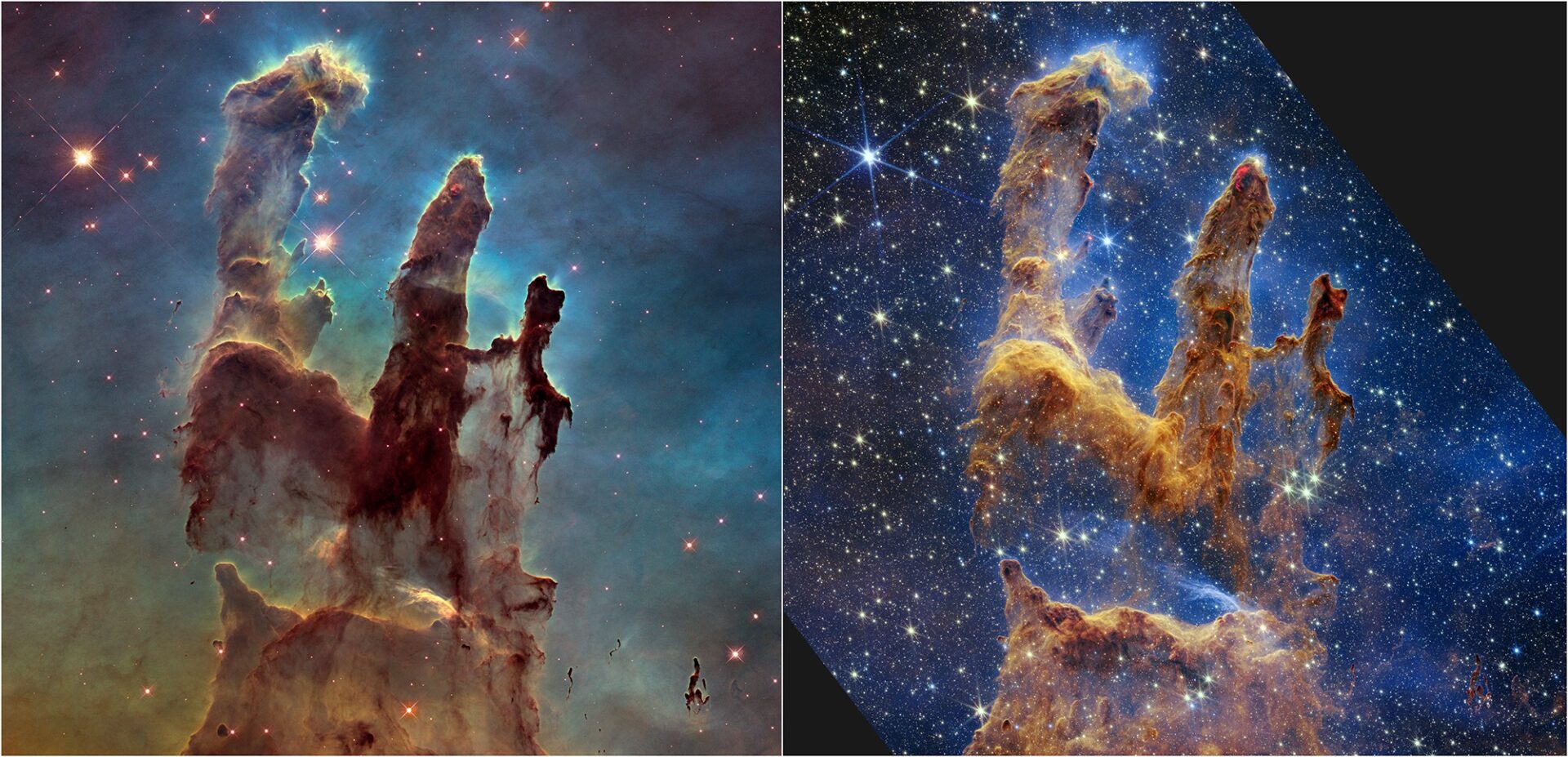The Pillars of Creation are one of the most famous and spectacular objects in the Universe. The James Webb Space Telescope already demonstrated the Pillars of Creation before, but at that moment the power of the JWST’s sharp eye was not enough due to a malfunction in the instruments. Now, after the resumption of operation of all instruments, the telescope has shown this cosmic spectacle in incredible detail.

There are instruments on board that allow to see in different wavelengths of infrared radiation. The first published image of the Pillars of Creation from the Near Infrared Camera (NIRCam) was published in October. Subsequently, another image was obtained by the mid-infrared instrument (MIRI), which turned out to be more creepy in appearance. This time, scientists combined them together and got more photos from both ranges.

NIRCam highlights newly formed stars that are visible in orange outside the pillars. MIRI draws attention to the dusty layers that can be seen in the light orange formation at the top of the image. The ghost pillars are also covered in dust. “This is one of the reasons why this region is crowded with stars – dust is the main component for star formation,” NASA said.
Picturesque area of star formation
The glowing red fingertip on the middle pillar indicates an area of active star formation inside. These stars are still “babies”, according to NASA estimates, they are only a few hundred thousand years old. They have millions of years of formation and a busy life ahead of them.

The Pillars of Creation represent a small but very picturesque part of the Eagle Nebula. They gained popularity thanks to a stunning image taken by the Hubble Space Telescope in 1995. James Webb’s ability to see with its infrared eyes gives us a new way to feel and understand this amazing formation. Thanks to the two telescopes, we now have several images of the pillars, each of which is beautiful in its own way.
Earlier we reported on how James Webb’s fascinating photo was turned into a joke.
According to Webbtelescope
Follow us on Twitter to get the most interesting space news in time
https://twitter.com/ust_magazine

